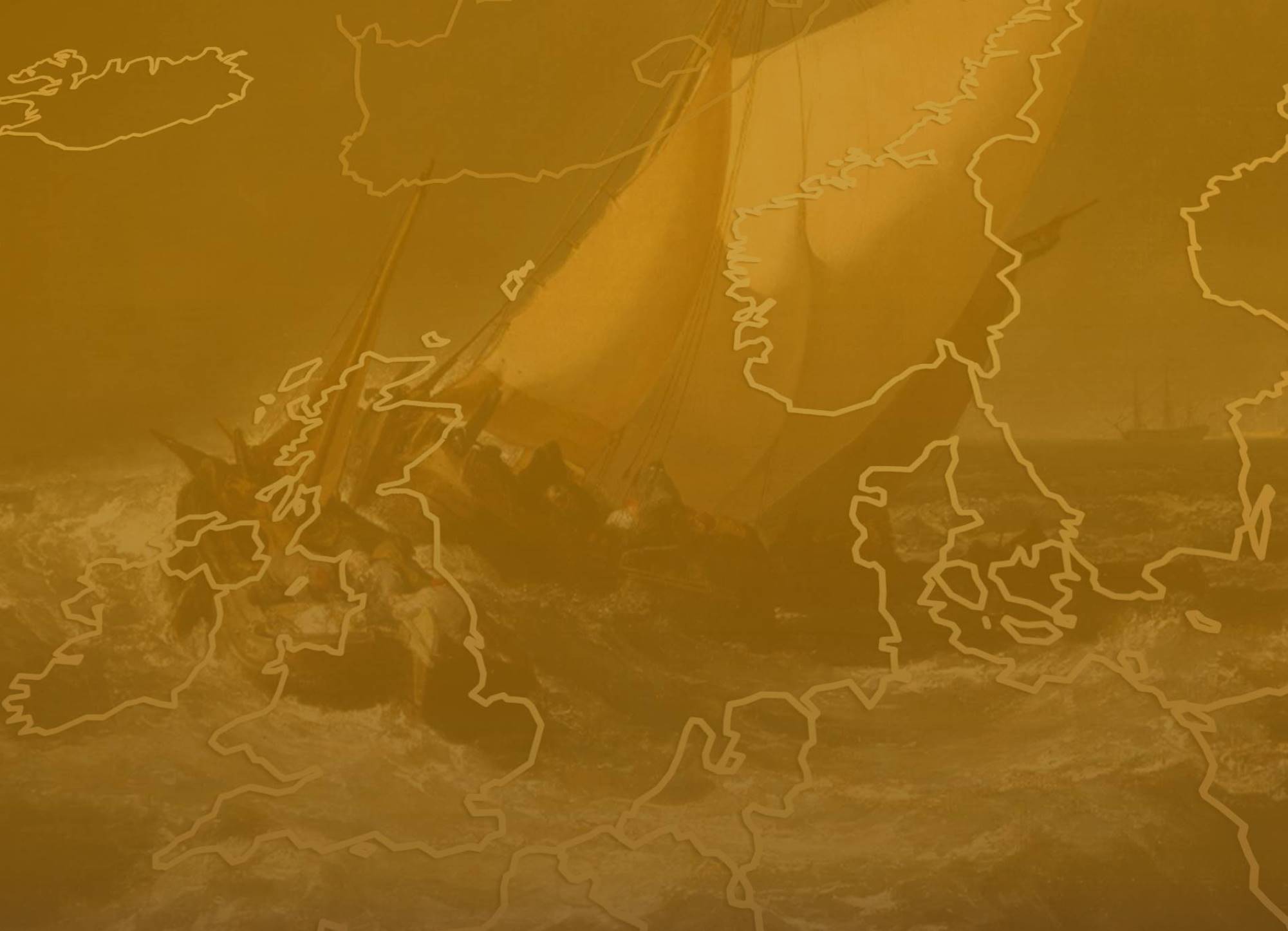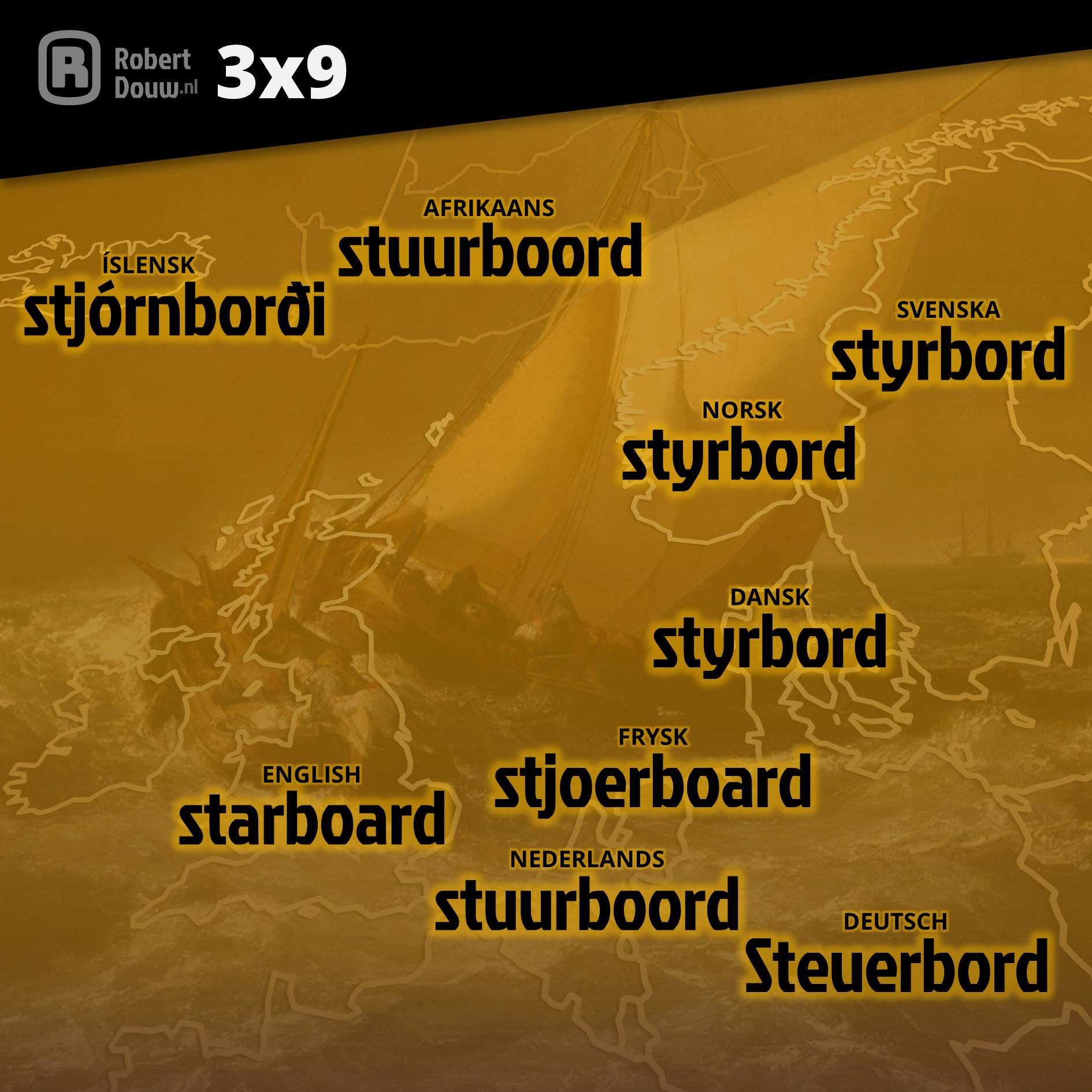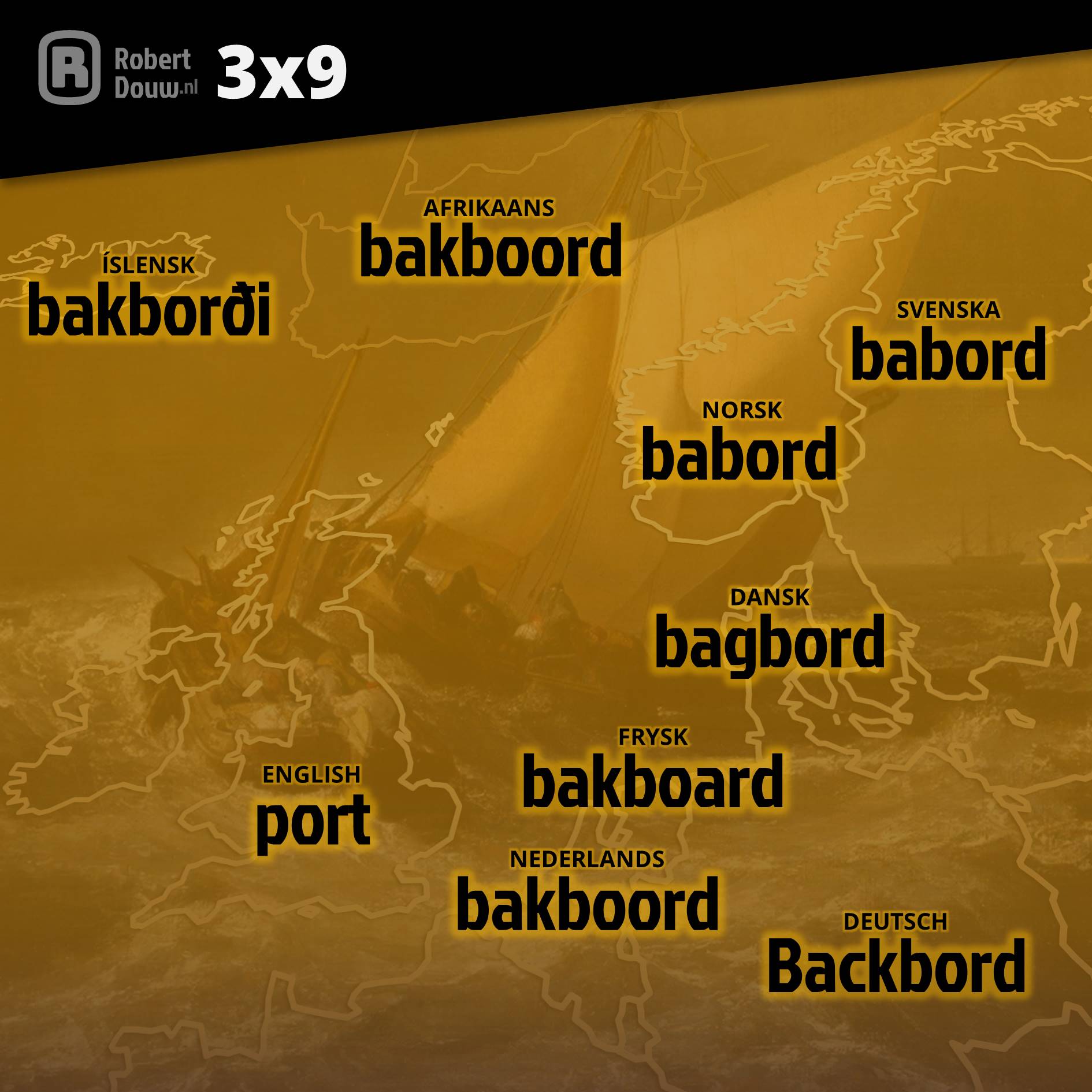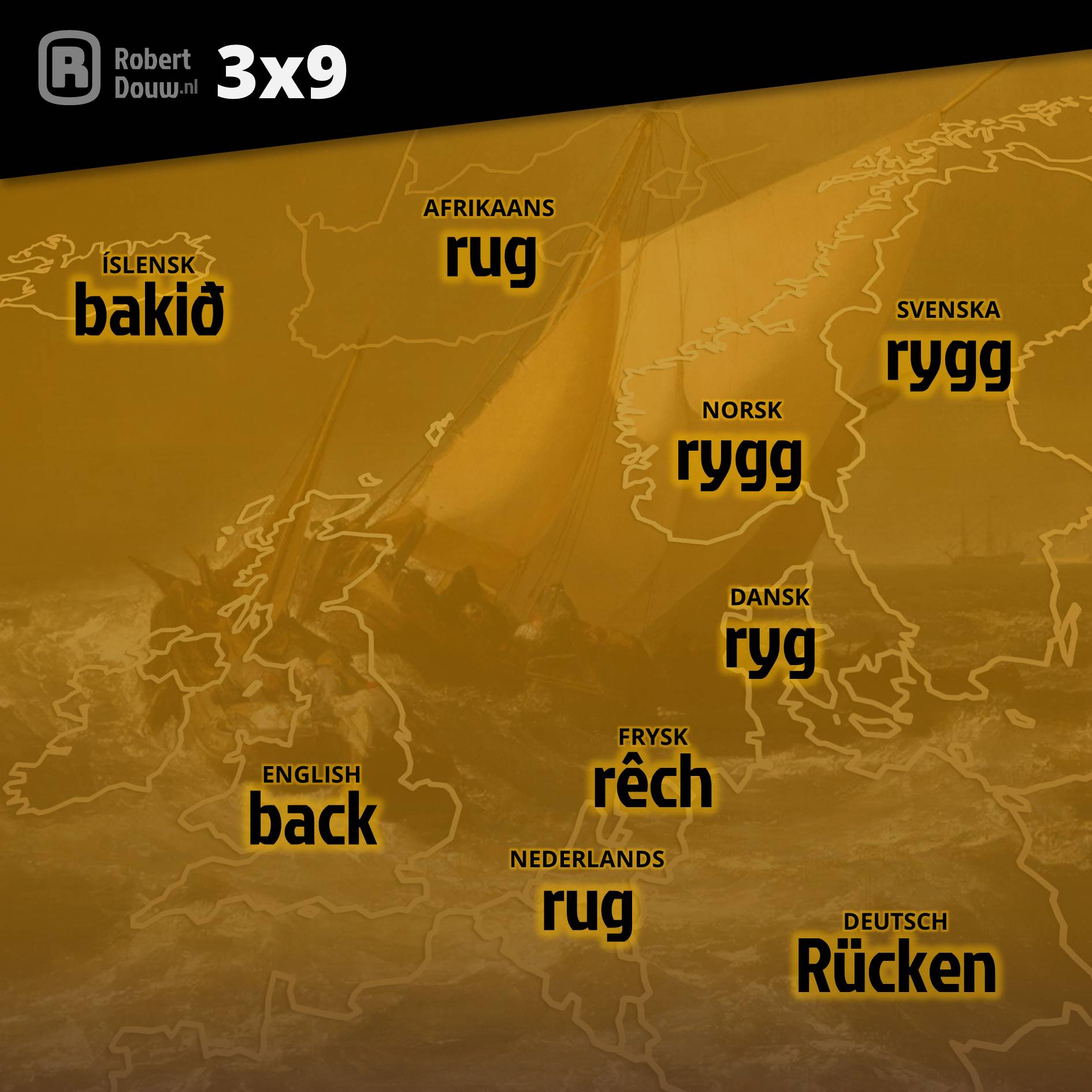THREE TIMES NINE
starboard, port, back
Linguistics
| 27-05-2022
How do you indicate a direction if there's no word for it? In the case of shipping this wasn't very difficult: the rudder was on the right side of the ship, so it was called starboard ("steer board"). You can still see a variant of this in all Germanic languages. When the helmsman was at the helm, he stood with his back – baec in Middle Dutch – to the left, which was therefore called bakboord in Dutch. That word is still used in almost all Germanic languages, but not in English.
The text continues below the images.
confusion of tongues
In Old English people still said bæcbord, but by the end of the 16th century it was replaced by larboard. That comes from Middle English ladde-borde which probably meant 'loading side', the side that was bordered on the harbor from where the cargo was loaded onto the ship. However, the word larboard caused problems: in a storm it's hard to hear the difference between starboard and larboard... That's why from 1844 the left side was officially called port in English, probably because the left side bordered the port (harbor) when it was docked.
pork back
In most Germanic languages, the word bak has been replaced by a form that resembles Dutch rug. Those words come from the Proto-Germanic stem *hrugja-. In Middle English, rigge was used to indicate the back, but that word probably became archaic in the 17th century. The word has left its mark in English in ridge, which is derived from it. In Dutch, the word bak was not only used for the back of a human being, but also for the back of a pig and later for the whole animal. You can still recognize it in the originally English name for meat from the back of a pig: bacon.
In Old English people still said bæcbord, but by the end of the 16th century it was replaced by larboard. That comes from Middle English ladde-borde which probably meant 'loading side', the side that was bordered on the harbor from where the cargo was loaded onto the ship. However, the word larboard caused problems: in a storm it's hard to hear the difference between starboard and larboard... That's why from 1844 the left side was officially called port in English, probably because the left side bordered the port (harbor) when it was docked.
pork back
In most Germanic languages, the word bak has been replaced by a form that resembles Dutch rug. Those words come from the Proto-Germanic stem *hrugja-. In Middle English, rigge was used to indicate the back, but that word probably became archaic in the 17th century. The word has left its mark in English in ridge, which is derived from it. In Dutch, the word bak was not only used for the back of a human being, but also for the back of a pig and later for the whole animal. You can still recognize it in the originally English name for meat from the back of a pig: bacon.
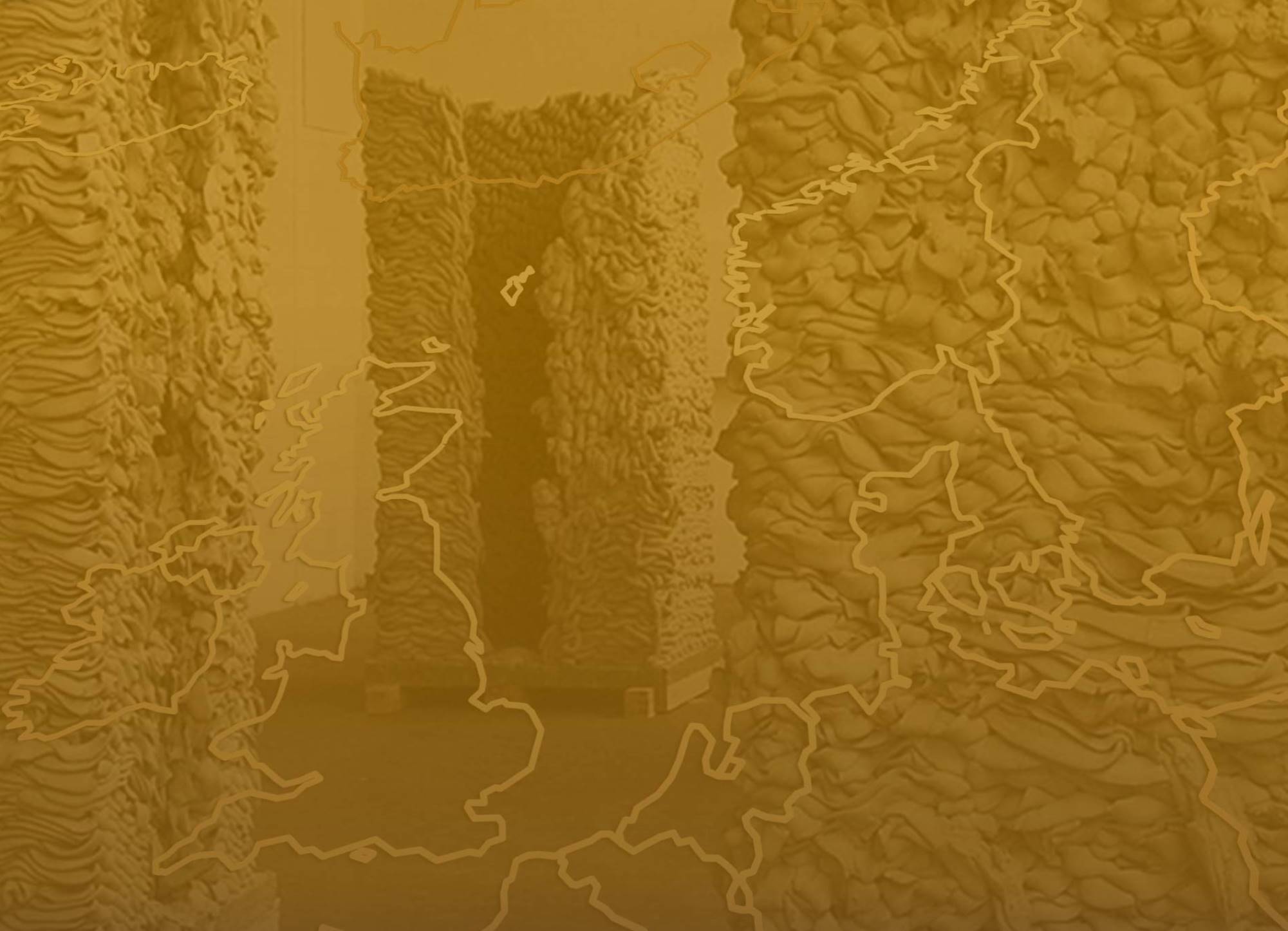
THREE TIMES NINE
concrete, concrete, abstract
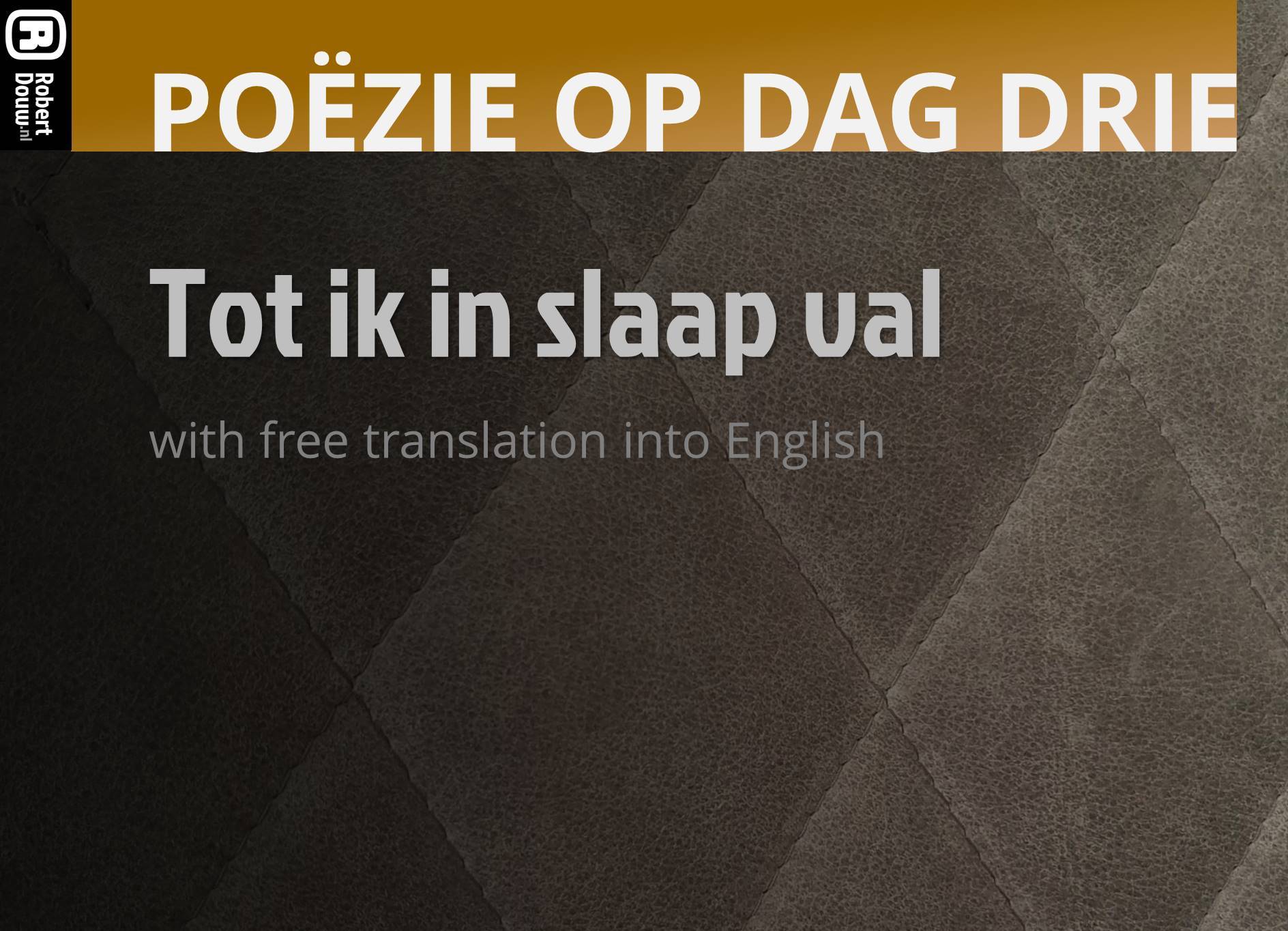
POETRY ON DAY THREE
Tot ik in slaap val (Until I fall asleep)
LINGUISTICS
Click here for an overview of everything in the Linguistics section.
